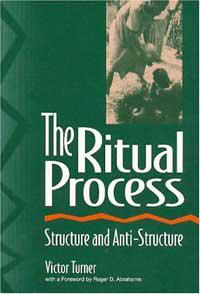It is only fitting that Victor Turner, a cultural anthropologist, wrote one of the famous articles ever to have graced the august pages of one of my favorite journals, History of Religions. It is all the more remarkable that this article (“The Center Out There: Pilgrim’s Goal”) was published in 1973. In the past 3 months, “The Center Out There” has been accessed 278 times; in the past 3 years that figure rises to 1,055. Turner’s symbolic unpacking of ritual pilgrimage has incredible staying power and remains influential.
I will confess that I’ve never really understood Turner. Whenever I’ve read his work, which has been often enough, I’ve been dazzled by his learned creativity. When the dazzle subsides, I’m usually left wondering what he said and what his point was. Perhaps that was his point. Or that there really isn’t any point, and if there is a point we can’t really understand it.
Because my befuddlement sometimes leaves me feeling guilty, I occasionally go back to Turner (or his interpreters, as is only fitting) to give it another go. In doing so recently, I came across Benjamin Ray’s review of Dramas, Fields, and Metaphors: Symbolic Action in Human Society, which Turner published in 1975. I no longer feel guilty about being confused.
Ray, professor of religious studies at Virginia and author of the best article I’ve read on Stonehenge (which I wrote about here), is also confused. He first attempts to characterize Turner’s work and method:
The essays in the present volume bring together these basic fieldwork “intuitions,” as Turner calls them, and advances their integration. The first essay, “Social Dramas and Ritual Metaphors,” argues that cultural symbols, including ritual metaphors and paradigms, not only complement existing social and cultural structures but also originate in and sustain processes involving major structural changes. [I]t is clear that Turner is not just interested in “social change” or in the logic of “symbolic systems” as such, nor merely in the “mobilizing” function of symbols. He is fascinated by the more radical encounter between institutionalized structures (both sacred and secular) and symbolically charged “anti-structures,” in which the “deep structure” or “root paradigms” of a culture become activated and revealed. Here Turner operates not only with a surface/ depth distinction but also with a special diagnostic method which he calls “dramatistic.” Like Freud, he believes that the “disturbances of the normal and regular often give us greater insight into the normal than does direct study” (p. 34). What this method reveals are the deep cultural sources of both the normal and the abnormal. Here, too, Turner’s fieldwork experience seems to assert itself. The anthropologist is like the ritual initiate who perceives the “ultimate things” of his society when its normal (surface) structures are dramatically suspended or reversed or called into question.
Ray finds this all a bit much:
It is difficult, however, to be more precise about Turner’s thought, because much of it is as metaphorical and processual as his vision of society itself. He is not given to systematic, theoretical exposition but to episodic, open-ended discussion, interspersed with wide-ranging examples, methodological allusions, and highly figurative passages. The result is often stimulating but also highly idiosyncratic and sometimes mystifying.
As Ray continues to probe Turner’s ideas, he variously describes them as “opaque,” “mystical,” and “unclear.” Turner’s “lack of clarity” may be part of his method, but Ray doesn’t seem to be buying it.
It’s good to know I’m not alone and that my failure to appreciate Turner is not due entirely to my own density. Still having doubts (about my density), I’ve resolved to read Mathieu Deflem’s (open access) “Ritual, Anti-Structure, and Religion: A Discussion of Victor Turner’s Processual Symbolic Analysis” (1991). Perhaps it will help.
Reference:
Ray, Benjamin. (1977). An Anthropologist’s Pilgrimage. History of Religions, 16 (3), 273-279




